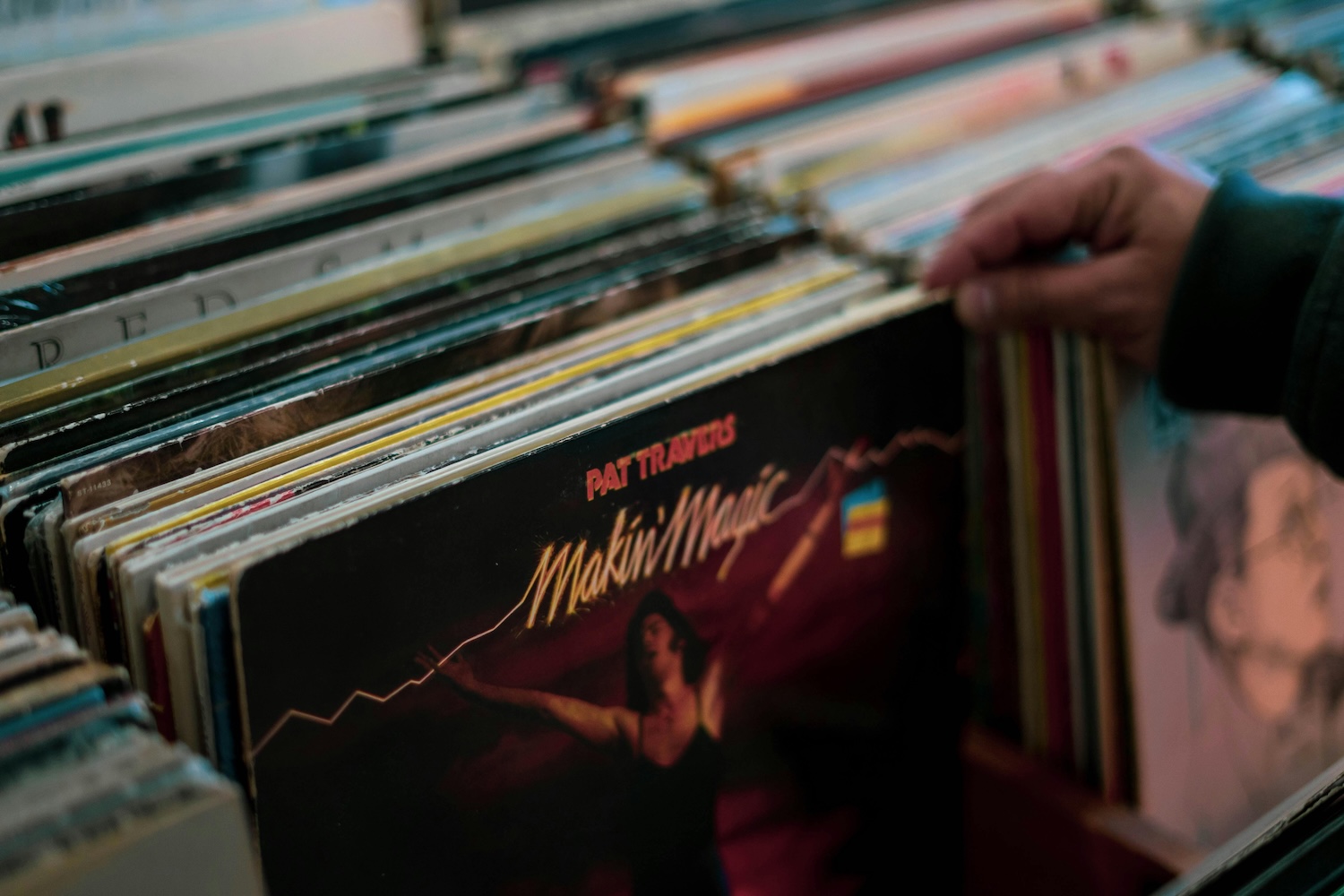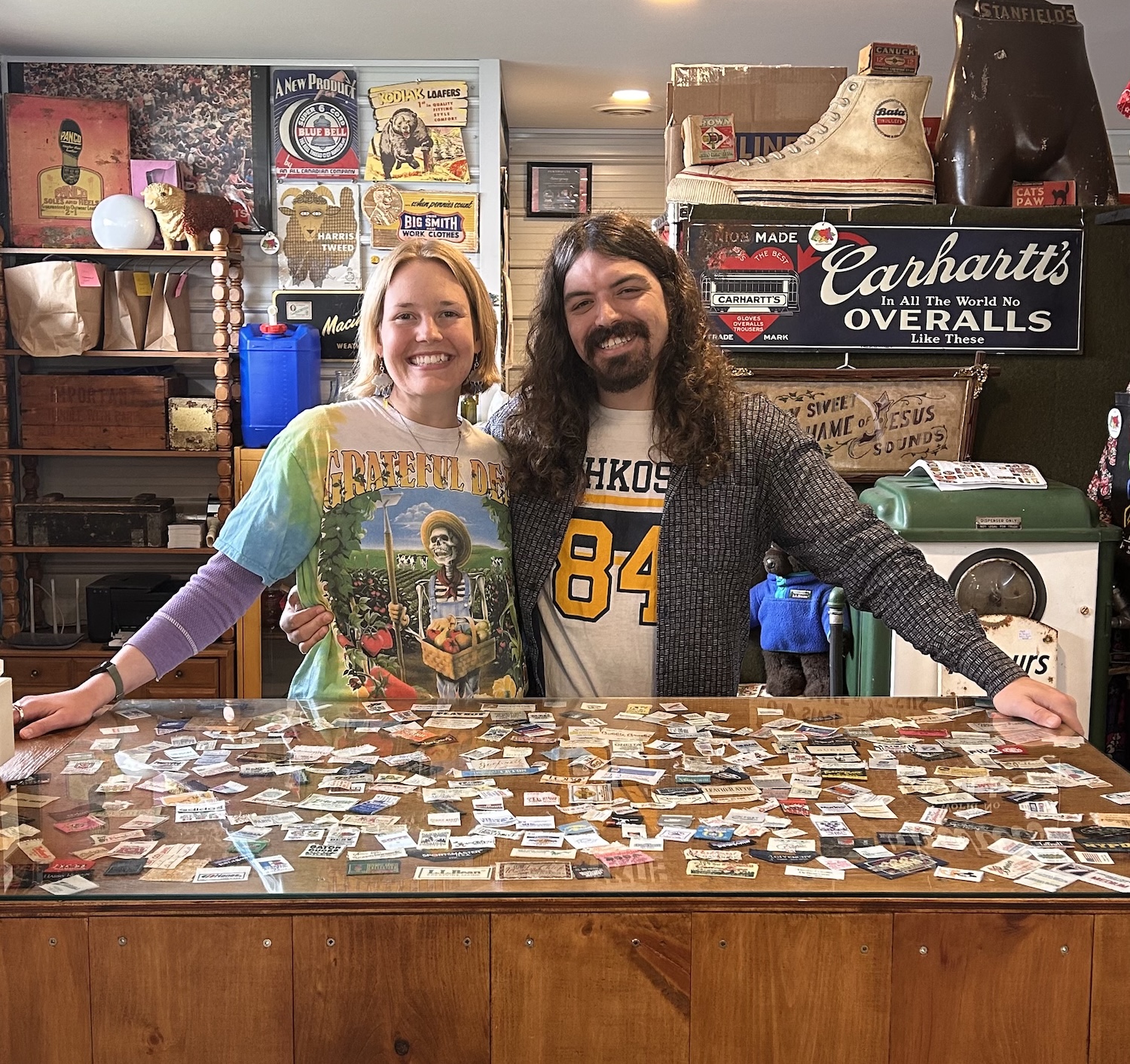
Trend watch: 1980s
There is much to love about this outrageous, over-the-top decade. Here’s everything you need to know about the ’80s, baby
What’s the first thing that comes to mind when you think of the 1980s? For us, it’s big. Big hair, bigger shoulders, bold colours. Maximal to the...well, max. Everything about the 1980s was excess.
While the 1980s could be a lot, there is much to love about this outrageous, over-the-top decade. And, like everything in fashion and design, what goes around comes back around again.
It’s been over 30 years since the end of the 1980s (yes, it’s vintage!), and, as a result, that quintessential ’80s aesthetic has been popping up all over mainstream retail for the past few years, helping to boost vintage trends and vice versa.
Trend Watch helps vintage sellers and buyers to learn about art and design movements — so if you’re seeking information about 1980s decor or 1980s fashion, here’s what you need to know.
Looking for more 1980s vintage? Check out this curated list of sellers.
Why the 1980s are popular
The 1980s were everything. This is the decade that gave us the Walkman, MTV, Back to the Future, Run-DMC, Madonna and Pac-Man.
For Gen Xers and Boomers, there’s a certain nostalgia in having lived through the 1980s in their heyday and seeing how the trends get reinterpreted today.
Same for Millennials, who were babies or kids in the 1980s but experienced much of the lasting ’80s influence in the early 1990s.
For Gen Ys and Gen Zs, who are experiencing the 1980s influence for the first time, things feel fresh and new.
It’s hard to define something as broad as 10 years of fashion and design. There were some prominent and very disparate trend movements within this decade.
But when it comes to buying vintage, you know the 1980s when you see it: bright colours (or pastels!), shoulder pads, boxy jackets, oversized sweatshirts, marble, brass, chrome, lots of plastic laminate, black lacquer.
A brief history of 1980s design
Incorporating a few pieces from the ’80s or mixing and matching vintage from that decade with other periods can create a look that’s thoroughly modern. Here are three style influences to look out for as you’re shopping for 1980s vintage furniture and decor:
Memphis Design
Cue the primary colours, black-and-white patterns, graphic shapes and angular lines: the backbone of the 1980s aesthetic was Memphis design.
In 1980, Italian designer and architect Ettore Sottsass (he of the now-Insta-famous Ultrafragola mirror, designed in 1970 for Poltronova) founded the Memphis Group in response to the modernist concrete and steel designs that had prevailed through prior decades.
The collective of designers, influenced by the avant-garde, Radical design period of the late 1960s, produced a range of vibrant postmodern furniture, lighting and decor.
This trend then trickled down into graphic design principles — think of the squiggly lines, geometric shapes and block fonts used throughout advertising at the time.
In a nod to the style’s eclecticism, the Memphis movement itself, which lasted until 1987, was named after a Bob Dylan song that Sottsass thought encapsulated both the Tennessee city and the capital city of ancient Egypt.
What makes Memphis feel especially now again is that the movement experienced a revival in the mid-2010s, as tech firms, advertising companies and editorial campaigns took the mix-and-match approach to shape, pattern and colour and added a dash of Millennial modernism.
Hollywood Regency
In the 1980s, there was some carryover from the second coming of the Hollywood Regency period in the 1970s. The decor trend originated in the 1920s and lasted in some form or another through the 1950s.
The original Hollywood Regency period used metallics such as brass, gold, silver and chrome, often paired with glass or mirrors.
In the 1980s, there was a still a heavy focus on brass-and-glass tables, consoles and shelving influenced by the Milo Baughman pieces of the 1970s, as well as gilded lighting, black lacquer and laminate furniture trimmed in metallics, and deep, bright colours such as pink, seafoam green and turquoise.
If Memphis design was about the bold and the unusual, then Hollywood Regency revival was about the refined and glamorous.
Art Deco
At the confluence of both the Memphis and Hollywood Regency movements was the ongoing revival of Art Deco, a decorative design movement of the 1920s and 1930s that favoured clean lines, often inlaid with luxurious materials such as ivory, chrome and Bakelite.
Art Deco became popular again in the 1960s, but by the 1980s was closely tied with the style of South Beach in Miami, which was experiencing a renaissance as its old hotels underwent renovations to be restored to their former Art Deco glory.
This led to “tropical Art Deco,” which incorporated paradise motifs of sunsets and palm trees with jewel tones, pastels and lots of glamorous, bling-y elements reminiscent of the Hollywood Regency style. Geometric shapes and neon elements referenced the decade’s Memphis style.
Get the look:
- Squiggle lamps
- Lucite furniture
- Laminate dressers and consoles
- Brass, glass and mirror accents
- Black lacquered furniture
- Tessellated marble pieces
- Mirrors with metallic trim or etched designs
- Pastel vases
- Palm trees, shells, florals
What materials to look for
When shopping for 1980s vintage furniture and decor, here’s what to look for:
Polished brass
Brass is a mix of copper and zinc, which is why when it goes unpolished, it develops a patina that lends to its vintage look. Using brass cleaner, such as Brasso or Bar Keeper’s Friend, can take vintage brass back to a shiny state.
The brass you see on modern finishes is usually satin, brushed or matte. Brass furniture from the 1980s, however, tends to be polished brass, which means it has a bright, mirrored finish.
The furniture is made from steel or aluminum and employs brass plating to get the shiny look.
Polished brass can be wiped clean, but once a polished brass piece has been scuffed, nicked or otherwise worn, it loses the finish and the exposed steel can get corroded.
There’s no going back to the polished mirror finish unless the brass is re-plated, which can be a costly process.
That’s important to keep in mind when shopping for 1980s brass furniture – remember, some wear and tear is to be expected with vintage furniture. Polished brass pieces from this era often have glass or mirror elements.
Lucite
Lucite is a high-grade brand name of acrylic resin that was developed in the 1930s by DuPont. You may find true vintage Lucite, but you may also come across clear acrylic plastic marketed as Lucite.
Lucite has some key properties that make it higher-quality: it is very clear (though it may be dyed to provide colour), it is scratch-resistant, it is strong and it is flexible. This makes it a great choice for chairs, tables and other pieces of furniture with high use, and, since it holds up well, makes for a sought-after vintage item.
Tambour
Tambour is a style of decorative wood, once exclusively used on doors and roll top desks. In the 1980s, it could be found on all types of furniture, walls or trim.
The wood is cut or routed into thin slats or dowel-like rods, and affixed, side by side, to flexible panels. This means that tambour can be applied across corners with rounded edges, like in a cabinet with pocket doors.
Tambour is commonly made of teak wood, but can also be cut from maple, oak or even non-wood materials. Keep an eye out for vintage tambour cabinets, bars and sideboards.
Continued below
Fresh advice about old stuff
Download our free tip sheets
Continued from above
Marble
Marble is recrystallized stone, such as calcite, dolomite or limestone. The minerals inside a stone change composition or get impurities as the stone ages, resulting in visible crystalline features and veining that are hallmarks of marble.
Coloured marble, such as black or red, was especially hot in the 1980s, as was tessellated marble, which is where the veining appears mottled. Vintage marble tables, marble columns/plinths and marble decor objects are all stylish bets.
Laminate
Laminate is a coating applied to furniture that uses heat to press paper and plastic resin onto a plywood, MDF or particleboard surface. The higher the pressure used, the better quality and less prone to chips the laminate is.
Melamine is a medium-density type of laminate made in a similar way and thus has a similar chip expectancy, but you will find a wider range of colours with laminate.
Vintage 1980s laminate furniture often has curved edges, no hardware and may be trimmed in metallic accents. Because these pieces can chip fairly easily, vintage laminate furniture in top condition makes for a great find.
A brief history of 1980s fashion
Spandex, leg warmers…what’s not to love? From Flashdance to Miami Vice, Salt-N-Pepa to Cyndi Lauper, Boy George to Bowie, the 1980s were nothing if not eclectic. Style icons such as Madonna, Iman, Princess Diana and Naomi Campbell ruled the decade.
Fashion took a cue from what was going on in the world at the time. It was the golden age of hip hop, and thus the golden age of streetwear. As rap music went mainstream, Black America defined a new era of dress that has only gained in popularity today in the vintage market: sneaker culture, brand logos, oversized jewellery, tracksuits.
According to Rie Nii, curator at the Kyoto Costume Institute, women were also emulating what was happening on the sociopolitical stage. They were now entrenched in professional life and had a style icon in Margaret Thatcher, who had recently become England’s first woman prime minister.
“Power dressing” was a way for women to blend into the business world, with tailored skirt suits helping to convey authority while retaining the traditional idea of feminine dress. As the decade wore on, those power suits got bolder and brighter, with bigger shoulder pads and more body-conscious skirts.
The body-conscious movement was in full swing during the 1980s, spurred by Jane Fonda exercise videos and form-fitting clothes designed by Azzedine Alaïa, Vivienne Westwood and Jean-Paul Gaultier. Gaultier was at his prime, converting corsets, girdles and other underclothing into wearable fashion for women.
The good thing about seeing trends happen again is that we can take the best parts of them and leave some of the less-than-desirable stuff behind. In the 2020s, body-positive > body-conscious.
The oversized blazers with shoulder pads that may have been fashionable in the ’80s buttoned and cinched with a skinny belt take on new life in the ’20s. Leave those vintage blazers hanging open and pair them with your favourite jeans. To shoulder pad or not to shoulder pad is an individual choice, but we say keep ‘em.
Get the look:
- Acid-wash jeans
- Lingerie-inspired daywear
- Boxy, structured blazers
- High-waisted suit pants
- Neon colours
- Kangol hats
- Ray-Bans
- Retro tracksuits
- Graphic T-shirts
- Large, chunky jewellery
- Colourful sneakers (Nike Air Max pictured below)
- Fanny packs
- Ruffled shirts or dresses
1980s style inspiration
- Do The Right Thing (1989)
- The Breakfast Club (1985)
- Dolly Parton
- Walkmans
- Grace Jones
- Cyndi Lauper
- Flashdance (1983)
- Princess Diana
- Fast Times at Ridgemont High (1982)
Cultural context
The 1980s were filled with political dichotomies and civil unrest. Just a sampling: there was the conservatism of U.S. President Ronald Reagan, whose ramped-up War on Drugs was leading to unprecedented incarceration rates for nonviolent drug charges, particularly among Black Americans.
Over in Europe, the similarly conservative Margaret Thatcher had increased inflation in the U.K. much to the displeasure of her citizens. The Berlin Wall, which didn’t fall until 1989, had bisected Germany since 1961 (at least 140 people had died just trying to cross the border over the course of the wall’s 28 years).
These kinds of seminal cultural events find their way into the literature, music, film and art of the time. Disparate movements in fashion and design further contextualize the duality of the decade.
Further reading
Looking for more information on 1980s style? Ask your local bookseller or secondhand book shop about the titles below.
- The Collection of the Kyoto Costume Institute: Fashion History from the 18th to the 20th Century, Taschen (multiple editions)
- The Decorating Book by Mary Gilliatt (1981)
- House & Garden’s Complete Guide to Interior Decoration, Bonanza Books (1981)
- 80s Fashion: From Club to Catwalk by Sonnet Stanfill (2013)
- Fifty Fashion Looks that Changed the 1980s by Paula Reed (2013)
- Back to Our Future: How the 1980s Explain the World We Live in Now — Our Culture, Our Politics, Our Everything by David Sirota (2011)
Looking for more 1980s vintage? Check out our curated list of sellers.
Why do you love 1980s style? Let us know in the comments!
Thank you for valuing our work!
Support our work to see this page.
You’ve got a good eye, but this gem is only available for members. Register for a plan or upgrade your current one to peek behind this vintage curtain, or log in below.















